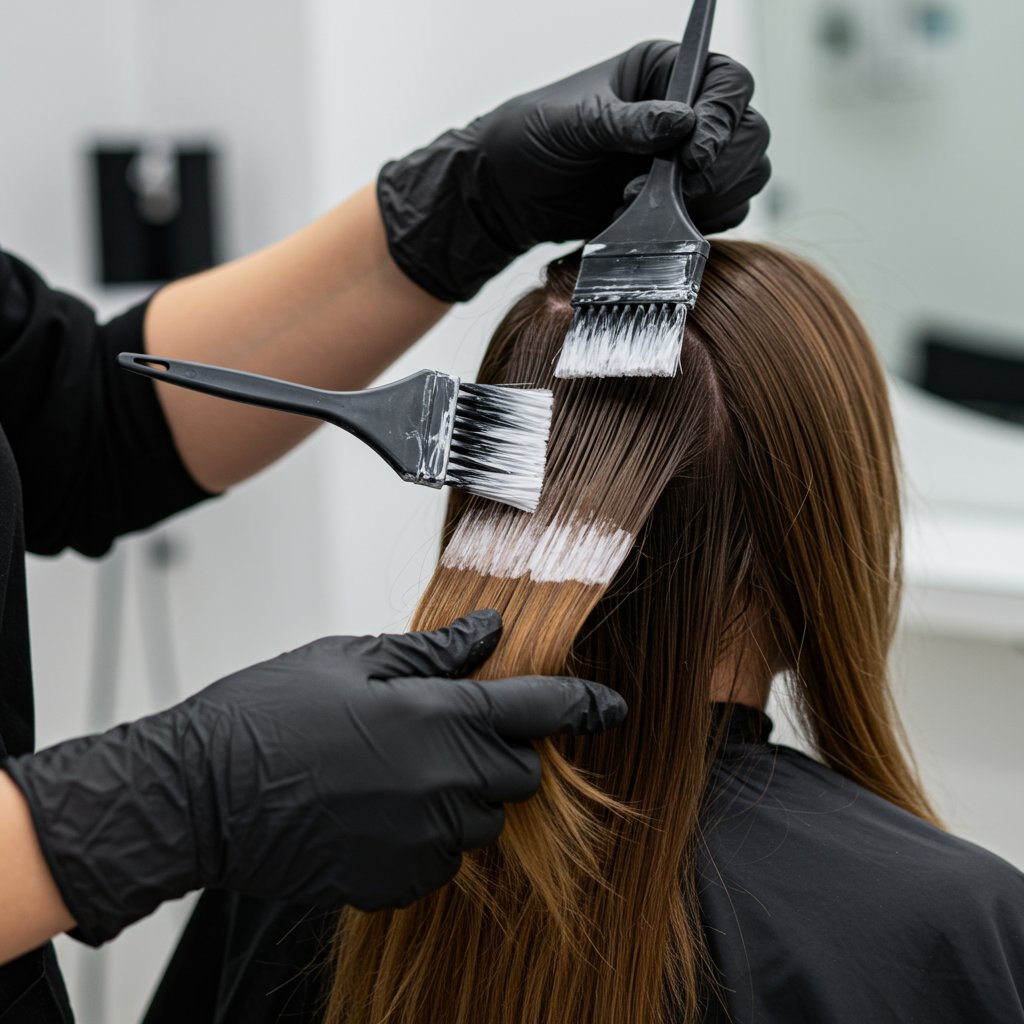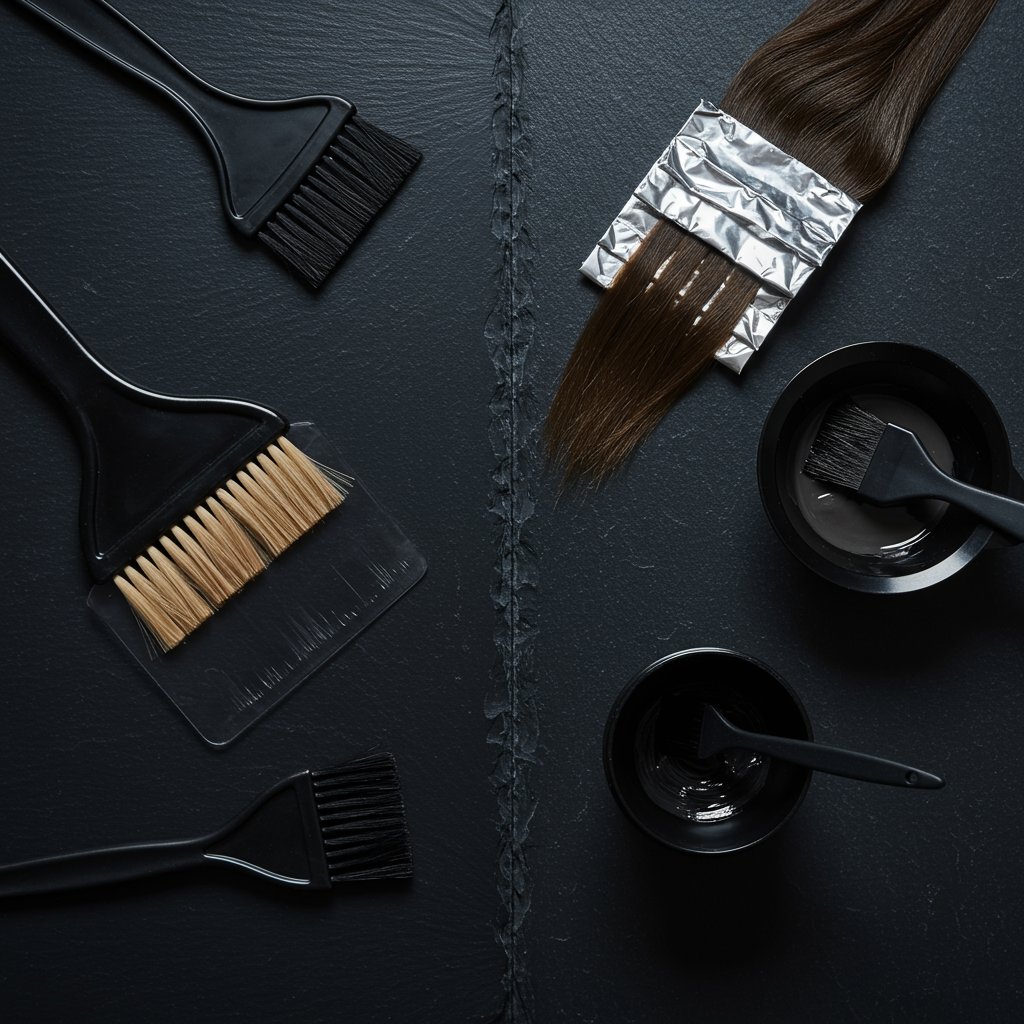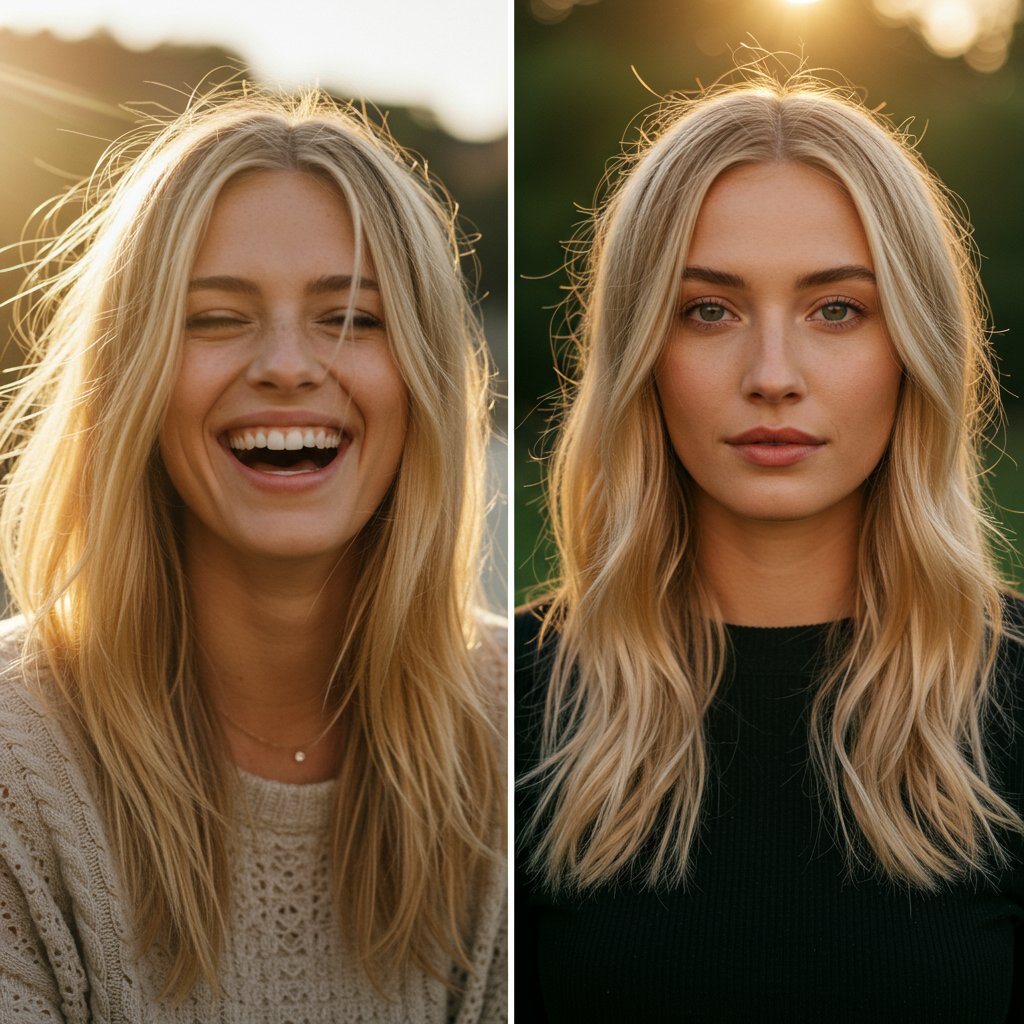Balayage vs. Ombré: The Ultimate Guide to Choosing Your Perfect Hair Color
Balayage vs. Ombré: Decoding the World's Most Popular Hair Color Trends
In the ever-evolving world of hair color, two techniques have consistently remained at the forefront of client requests and stylist portfolios: Balayage and Ombré. While both create stunning, dimensional looks that move away from traditional, uniform highlights, they are fundamentally different in both application and result. Understanding the core distinctions in the Balayage vs. Ombré debate is crucial for anyone looking to update their look, as it empowers you to have a more precise conversation with your stylist and achieve the exact hair you've been dreaming of. This comprehensive guide will illuminate the nuances of each technique, from the artistry of application to the beauty of the grow-out, helping you make an informed decision for your next salon visit.

Many people use the terms interchangeably, often leading to confusion and sometimes, disappointing results. Is it the soft, sun-kissed dimension of Balayage you're after, or the bold, dramatic gradient of Ombré? This isn't just a matter of semantics; it's a choice between two distinct artistic approaches to hair color. We'll explore the visual differences, the maintenance commitment each requires, what works best for various hair types and lengths, and even delve into popular hybrid techniques. By the end, you'll not only be able to spot the difference between Balayage and Ombré from a mile away but also confidently articulate which style perfectly aligns with your personal aesthetic and lifestyle.
What is Balayage? The Art of Sun-Kissed Hair Painting
Balayage, a French word meaning 'to sweep' or 'to paint,' is more of an artistic technique than a specific look. It involves a stylist freehand painting lightener or color directly onto the surface of the hair. Unlike traditional foiling methods that create uniform, patterned highlights, balayage allows for a customized, organic placement of color. The stylist strategically sweeps the color onto sections of hair, often focusing on areas where the sun would naturally hit, creating a soft, dimensional, and incredibly natural-looking effect. The strokes are light-handed near the root and become more saturated towards the ends, ensuring a seamless, blended transition with no harsh lines of demarcation.

This freehand application is what gives balayage its signature sun-kissed glow. The result is less about a total color transformation and more about enhancing your natural base with ribbons of light. It's the perfect choice for those who desire a low-maintenance color that looks effortlessly chic. Because the highlights are not placed directly at the root in a structured pattern, the grow-out process is incredibly graceful. You can go longer between appointments without worrying about an obvious root line, making it a practical and beautiful option for a modern, busy lifestyle. The beauty of balayage lies in its bespoke nature; a skilled colorist can tailor the placement to flatter your haircut, face shape, and hair's natural movement.
What is Ombré? The Bold and Beautiful Gradient
Ombré, another French term, translates to 'shadow' or 'shade.' This technique describes the final look rather than the application method itself. An ombré is characterized by a gradual, yet distinct, transition from a darker color at the roots to a lighter color at the ends. Typically, the hair is darkest at the root, transitioning through a mid-range shade, and becoming lightest at the tips. This creates a more defined and dramatic color-block effect compared to the subtle sweep of balayage. While balayage is about creating natural-looking highlights, ombré is a statement of intentional, graduated color.

The application for ombré often involves a more structured approach. To achieve the saturated, light ends that are key to the look, stylists typically apply lightener horizontally across sections of hair and often encase them in foils to maximize the lift. This creates a clear and defined line of transition, which can be blended for a softer effect (known as 'sombré') or kept more distinct for a bolder style. Ombré made a massive impact on the hair industry by offering a high-fashion, edgy alternative to all-over color. It works beautifully on medium to long hair where there is enough length to showcase the full gradient from dark to light.
Key Differences: Technique & Application Process
The fundamental difference in the Balayage vs. Ombré conversation lies in the application. Imagine a painter with a canvas: balayage is like using delicate, sweeping brushstrokes to create highlights and lowlights, while ombré is like creating a clear gradient wash of color from top to bottom. A stylist performing balayage will take vertical sections of hair and use a paddle and brush to paint the surface of the strands. This 'surface painting' is what creates the soft, diffused highlights that blend seamlessly with the base color.

Conversely, the application for ombré is typically horizontal. The goal is to saturate the entire bottom portion of the hair with color or lightener. A stylist will section the hair and apply color from the ends upward, carefully blending it at the desired transition point. Foils are often used in this process to incubate the hair and achieve a much lighter, more solid result on the ends. This horizontal, section-by-section saturation is what creates the distinct two-toned or multi-toned gradient effect. While a stylist's skill is crucial for both, balayage requires a more free-form, artistic eye for placement, whereas ombré demands precision in saturation and blending to avoid a harsh, dip-dyed appearance.
The Final Look: Subtle & Blended vs. Bold & Contrasting
Visually, the results of balayage and ombré are worlds apart. Balayage delivers a multi-tonal, dimensional finish that mimics months spent in the sun. The highlights are scattered throughout the hair, often framing the face and placed on the mid-lengths and ends. The key word is 'blended.' There are no obvious start and stop points for the color; instead, ribbons of light are woven through the hair, creating texture, movement, and a luminous, healthy-looking sheen. It's the epitome of 'I woke up like this' hair—effortless, chic, and sophisticated.

Ombré, on the other hand, presents a much more intentional and dramatic color statement. The look is defined by its graduation of color, with dark roots melting into significantly lighter ends. The contrast is the focal point. While the transition can be expertly blended, the overall effect is a clear shift from one shade to another. This makes it a bolder choice, perfect for those who want their hair color to be a noticeable and fashionable accessory. Think of balayage as whispers of color and ombré as a declaration of color.
Maintenance & Grow-Out: The Long-Term Commitment
When considering a new hair color, maintenance is a critical factor. This is where balayage truly shines and earns its reputation as a low-maintenance favorite. Because the color is painted away from the roots and blended artfully, there is no harsh line of regrowth. As your hair grows, the balayage grows out with it, looking softer and more natural over time. Many clients can go three to six months between full balayage appointments, often just coming in for a toner or gloss treatment in between to refresh the tone and add shine. This makes it an ideal choice for those with a busy schedule or anyone who prefers a less frequent salon commitment.

Ombré can require a bit more upkeep, depending on the level of contrast. A high-contrast ombré with dark roots and very light ends will show regrowth more obviously at the transition point. As the natural hair grows, the dark band at the top gets longer, which can alter the proportions of the look over time. To maintain the intended effect, you might need touch-ups every two to four months to blend the transition area or refresh the tone of the ends, which can be prone to brassiness. A 'sombré' (soft ombré) offers a lower-maintenance alternative, as the gentler transition is more forgiving during the grow-out phase.
Which Technique is Right for You? A Personal Style Guide
Choosing between balayage and ombré ultimately comes down to your personal style, hair type, and lifestyle. If your aesthetic leans towards natural, effortless, and subtly enhanced beauty, balayage is likely your perfect match. It's for the person who wants to look like they have amazing hair naturally, not like they just stepped out of the salon. It works on almost all hair lengths, from bobs to long layers, and is fantastic for adding dimension to both fine and thick hair without overwhelming it.

If you're looking to make a more distinct style statement and love a look with a bit of edge and high-fashion flair, ombré is the way to go. It's for the individual who isn't afraid of a more noticeable color and enjoys a bold aesthetic. Ombré generally looks best on shoulder-length hair or longer, as the length provides the necessary canvas to showcase the full, beautiful gradient of color. Consider your lifestyle as well: if you have the time for more regular toning appointments and love a polished look, ombré is a fantastic option. If you prefer a get-up-and-go style with infrequent salon visits, balayage is the undisputed winner.
Pro Tips: Preparing for Your Salon Appointment
Once you've decided on a direction, preparation is key to a successful salon visit. First, gather inspiration photos. Search for images of balayage or ombré on hair that has a similar color and texture to your own. This provides your stylist with a clear visual reference for what you like. During your consultation, be ready to discuss your hair history, your daily styling routine, and your maintenance budget. An honest conversation is the foundation of great hair color.

Before your appointment, it's best to arrive at the salon with clean, dry hair. While day-old hair used to be the standard advice, modern color formulas perform best on a clean canvas, free of product buildup or excess oils. This allows for even color application and predictable results. Finally, trust the process and your stylist's expertise. A professional colorist will be able to customize the technique to best suit your features, hair type, and desired outcome, ensuring you leave the salon with a beautiful, personalized look you'll love.
Frequently Asked Questions (FAQ)
Can you get balayage on dark hair?
Absolutely! Balayage on dark hair is incredibly popular and creates a stunning, high-contrast look. A stylist can paint on caramel, honey, auburn, or even blonde tones to add beautiful dimension and warmth to a brunette or black base. The key is a skilled colorist who can lift the dark hair to the desired level without compromising its health.Is ombré still in style in 2025?
Yes, ombré remains a stylish and relevant choice, though its modern interpretations have evolved. Today's trends often favor a 'sombré' or a more seamless blend than the high-contrast versions that were popular years ago. It's a timeless concept that can be adapted with current color palettes, like cool-toned ash blondes or rich copper gradients.Which technique is more damaging to hair?
Neither technique is inherently more damaging than the other; the potential for damage comes from the amount of lightening required. An ombré that lifts dark ends to a very light blonde will be more intensive than a subtle balayage that only lifts the hair a few shades. The health of your hair ultimately depends on the skill of your stylist, the quality of products used, and your at-home care routine.How long does a balayage or ombré service take in the salon?
Both are detailed, artistic services that require time. A typical balayage or ombré appointment can take anywhere from 3 to 6 hours, depending on your hair's length, thickness, and the desired result. This includes the consultation, application, processing time, toning, treatment, and styling.Can you switch from ombré to balayage?
Yes, it is possible to transition from an ombré to a balayage look. A stylist can break up the solid block of color on the ends by adding lowlights and applying hand-painted balayage highlights higher up into the hair. This will create a more blended, natural-looking result. It may take a session or two to fully achieve the desired balayage effect.
Conclusion: Your Perfect Color Awaits
The Balayage vs. Ombré discussion is not about which technique is better, but which is better for you. Balayage offers a timeless, natural, and low-maintenance option for those seeking a sun-kissed enhancement. Ombré provides a bolder, more dramatic gradient for those who want their hair color to be a distinct fashion statement. Both techniques, when performed by a skilled professional, result in beautiful, dimensional color that can elevate your entire look. Armed with this knowledge, you can now confidently step into a salon, articulate your vision, and collaborate with your stylist to create the hair color of your dreams.


